This month we have the blue-mouthed, live birth giving, sticky-footed, barking Elegant Gecko!
You will recognise it for its vivid green colour with either white, yellow or pale green markings on its back. If you’re lucky, you may even spot its bright blue mouth when it yawns! You’d have to be pretty lucky these days, unfortunately, because habitat destruction and introduced pests have put it in gradual decline.
Description
A gracile, and often strikingly marked species of green gecko, found in the forested regions of the northern North Island of Aotearoa/New Zealand. Although historically known as the Auckland green gecko, this species has quite a wide distribution (Northland to the central North Island, including Aotea and Hautaru), and thus in order not to mislead, its name was instead changed to the elegant gecko in order to reflect its scientific name, and stunning appearance.
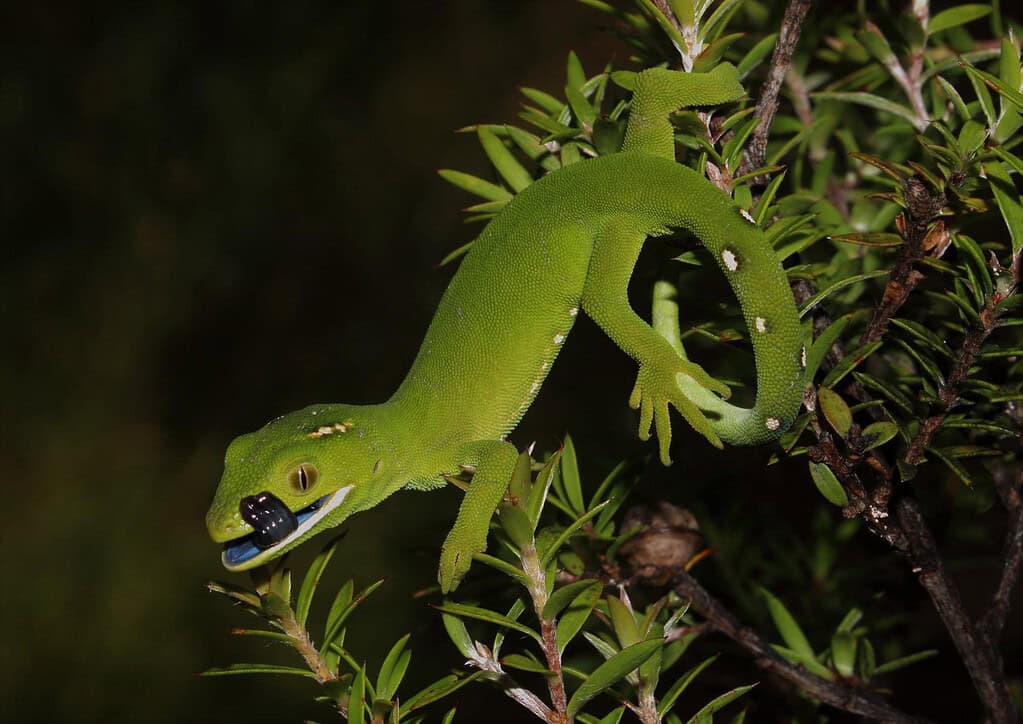
In general, elegant geckos are characterised by their bright to dark green upper surfaces, which in some individuals are broken up by white, cream, or pinkish markings (either striped, blotched, or a combination of both) with thin yellow, dark green, or black outlines. The sides of the animals are much the same as the upper surfaces, although may be underlined by a thin white stripe.
.As with most of our green gecko species, the elegant gecko’s ventral colour differs between males and females, with females having a green stomach, while males have a blue-tinged stomach.
Mouth and tongue colour is typically a key feature in distinguishing between North Island Naultinus species, however, the elegant, and barking gecko (Naultinus punctatus) share the combination of a deep blue mouth with a black tongue.
Geckos also have teeny tiny hairs on their feet helping them to ‘stick’ which is why you might find them hanging in precarious-looking places, too!
Life Expectancy & Birth
Did you know that New Zealand geckos give birth to live young? This makes them super special reptiles, combined with the fact that only geckos can vocalise (have you heard of a ‘barking’ gecko?).
Like all of Aotearoa’s gecko species, the elegant gecko is viviparous, giving birth to one or two live young annually, from around Late February through to April. Breeding seems to occur from July through to September, with males performing mate guarding, and following females around. The gestation period is around 7.5 months.
As is the case with many lizard species, mating in green geckos may seem rather violent with the male repeatedly biting the female around the neck and head area. Sexual maturity is reached between 1.5 to 2 years.
Elegant geckos have been recorded to reach ages of ~25 years in captivity, but are likely to exceed this!
Captive green geckos have frequently been known to live for upwards of 25 years, with some individuals topping the records at 50+ (D. Keal pers. comm 2016). In the wild, green geckos have been recorded as reaching a minimum of ~15 years, although it is likely to be more than this given that the population in question was only monitored from 2009, and those animals are still alive (C. Knox pers. comm 2021).
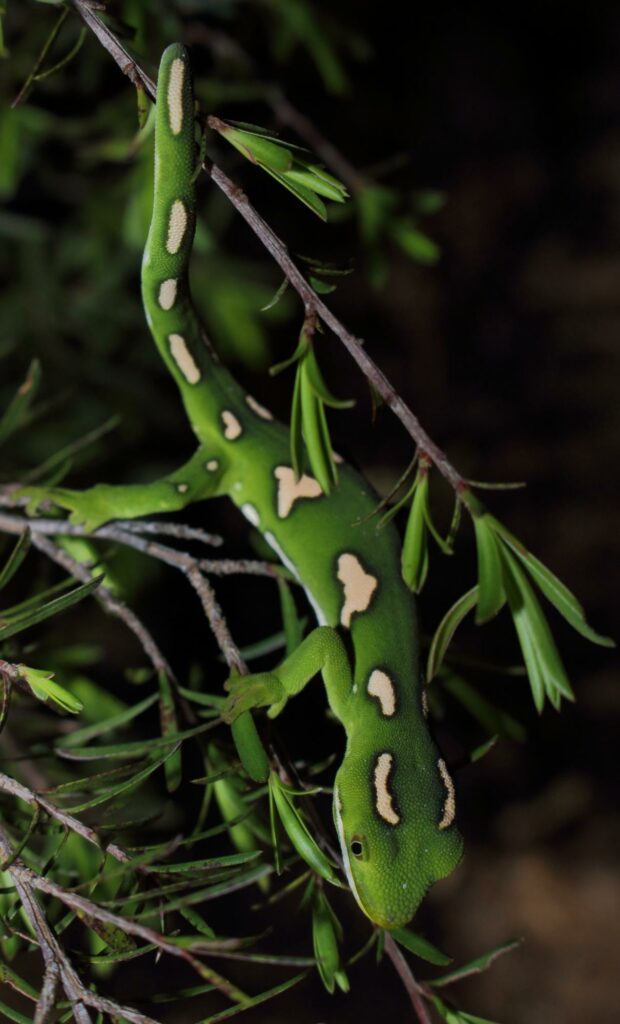
Ecology and habitat
The elegant gecko appears to be cathemeral (active both day and night) in nature, although predominantly considered diurnal (day-active), due to its strongly heliothermic nature (being an avid sun basker). As with all members of the Naultinus genus they are primarily arboreal (tree-dwelling), although can at times be found quite low to the ground in prostrate (ground-hugging) vegetation. Although seldom seen on the ground, males can be found travelling between trees in search of mates during the breeding season. As with all green geckos, they possess a strongly prehensile tail which acts as a third-limb/climbing aid when moving through shrubs and trees. They are known to mouth-gape and produce a barking sound as a defensive behaviour against potential predators.
Diet
Elegant geckos are omnivores. They are primarily insectivorous in nature but are also known to feed on the nectar, and small fruits of several plant species, and the honeydew of scale insects when they are seasonally available. Being arboreal in nature, their invertebrate prey tends to be predominantly composed of flying insects (moths, flies, beetles), and small spiders.
Conservation status
Listed in the most recent threat classification as ‘At Risk – Declining’, due to a mix of land development/clearance of habitat, and predation by mammalian predators.
Interesting notes
Māori first described the vocalisations of green geckos to Europeans as being like kata – laughter, being a repetitive call somewhere between a bark and a squeak.
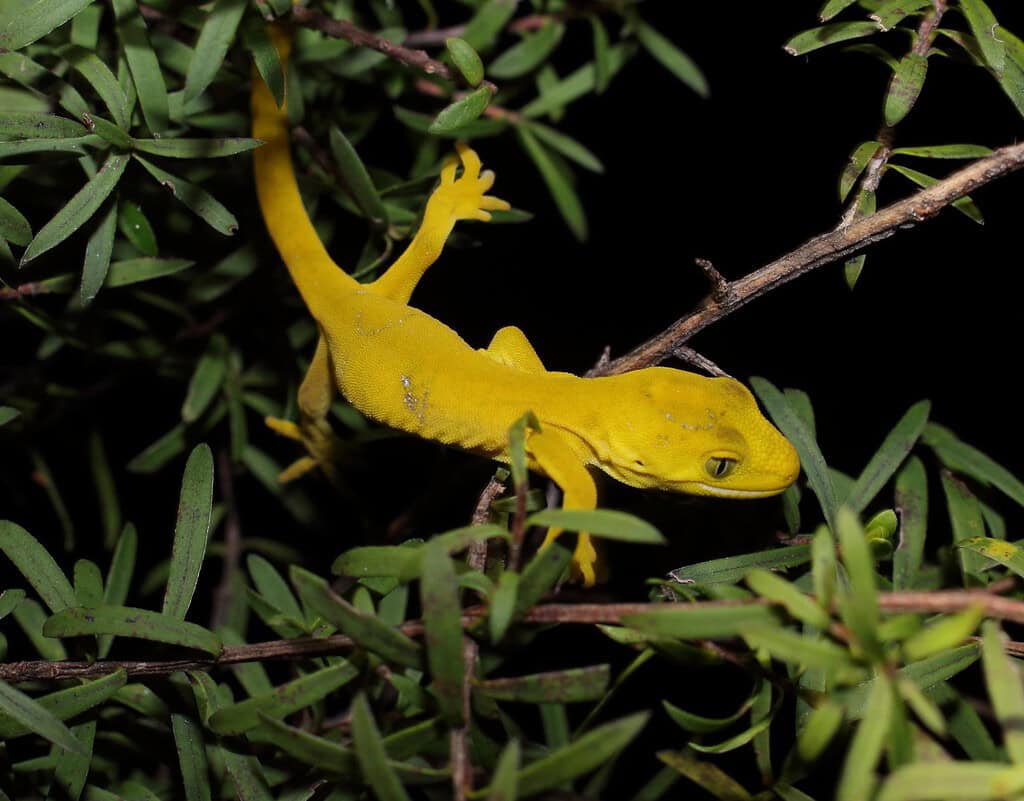
Show the moko kākāriki some love by
By planting natives in your garden! Moko kākāriki love to nibble on coprosma berries, a tasty treat for geckos and a beautiful addition to any New Zealand garden.
Other things you can do include
Planting native grasses for geckos to hide or hunt for insects in
Keep on top of introduced pests like mice and rats by placing (and checking) traps
Pop a bell on your cat! Even though we love cats too, they are top predators on the food chain and actually like to hunt New Zealand’s more vulnerable species – including moko kākāriki
Record your sightings on places like INaturalist NZ or let DOC know. The ultimate goal is to have moko kākāriki and other natives running wild and free across the country including in your back yard!
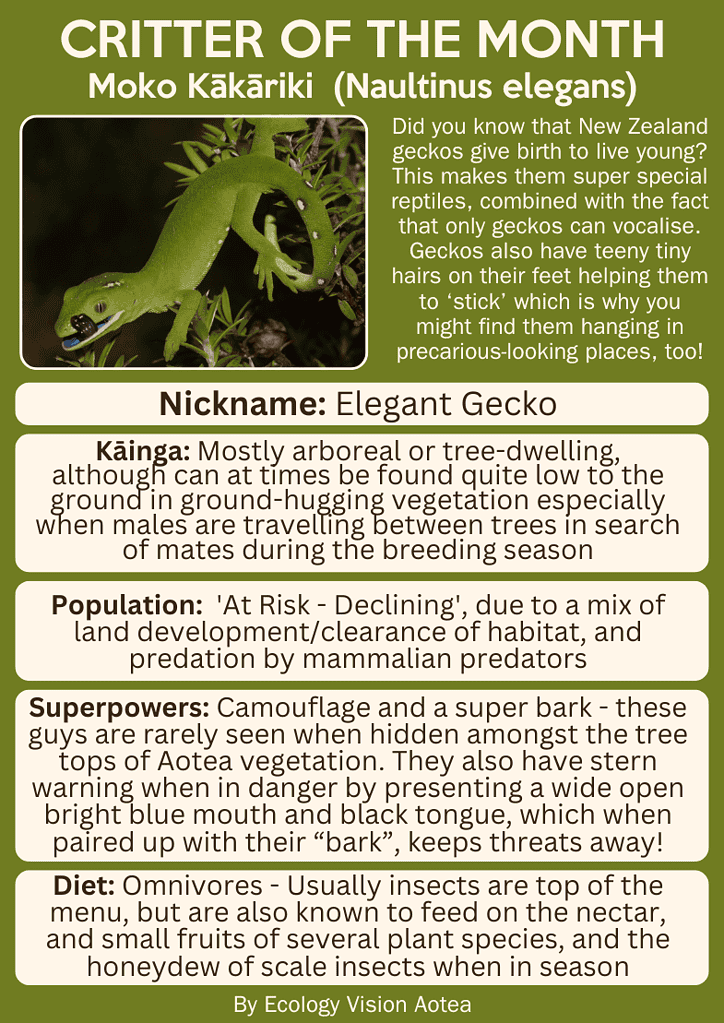
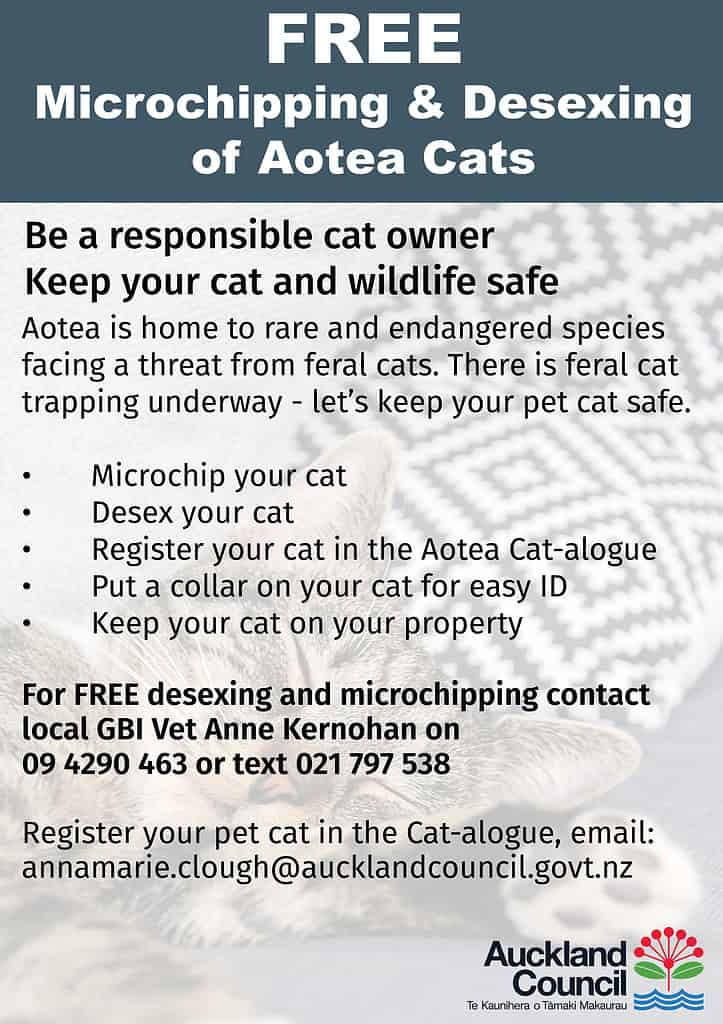
Some info from this article taken from these sources:
https://pukaha.org.nz/whats-in-your-garden-moko-kakariki/
https://www.reptiles.org.nz/herpetofauna/native/naultinus-elegans



















